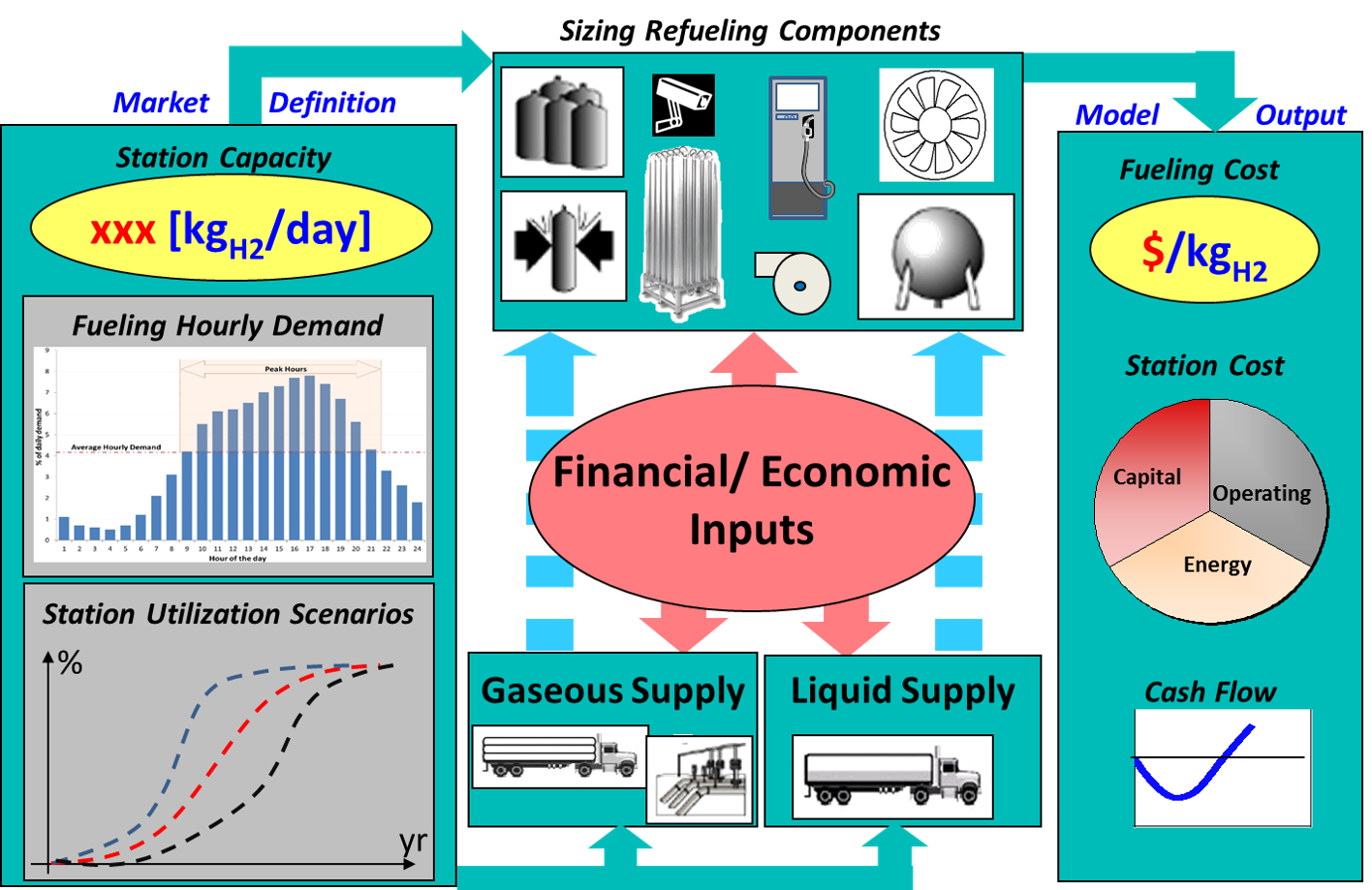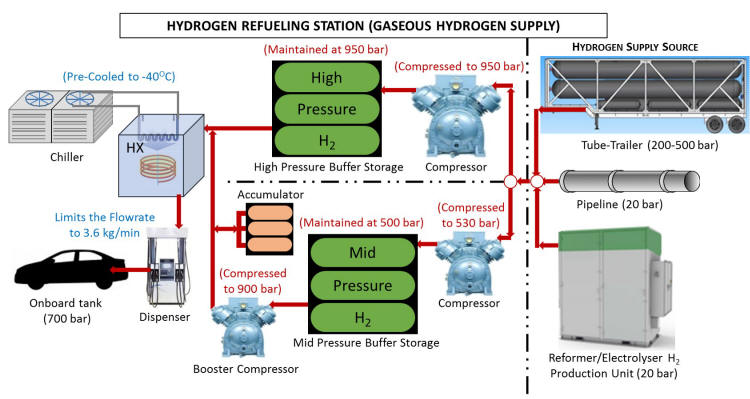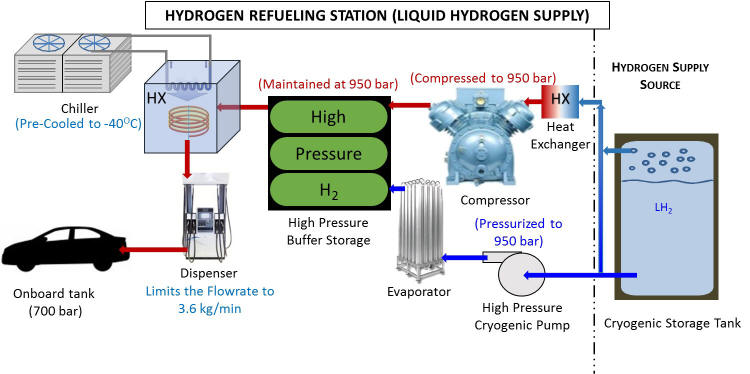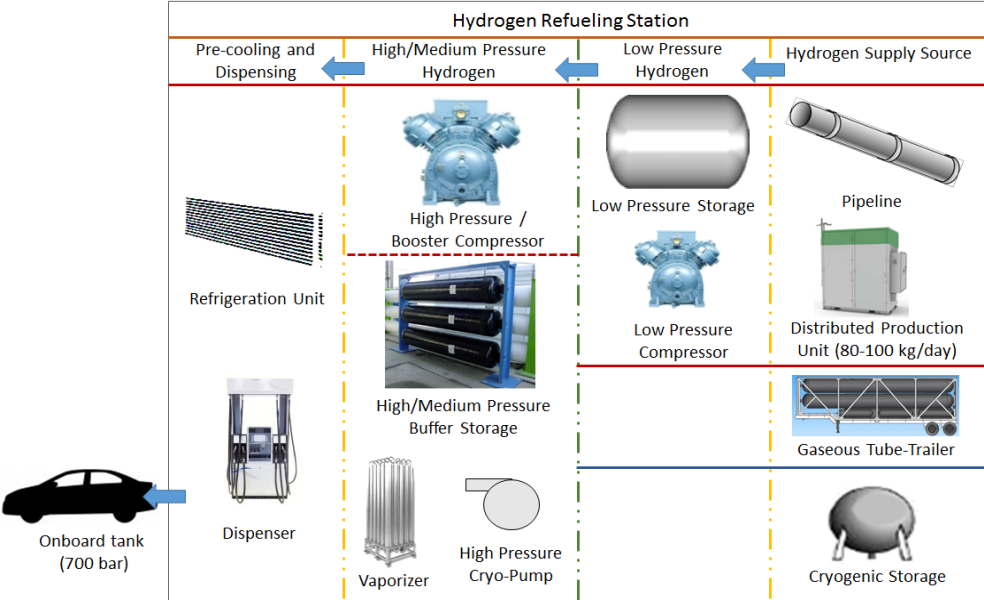HYDROGEN REFUELING STATION ANALYSIS MODEL (HRSAM)

Schematic overview of the HRSAM model
|
Overview |
|
|
|
Since its initial public release in 2014,
HRSAM has been expanded and updated with state of the art data on
station configurations, component technologies, and costs of interest
to government agencies and industry stakeholders.
|
|
|
|
Category |
|
|
|
Refueling techno-economic assessment
for light-duty fuel cell electric vehicles.
|
|
|
|
Objectives |
|
|
|
Provide platform for comparing the cost
of alternative hydrogen refueling options. Identify cost drivers
of current hydrogen refueling technologies for various station configurations,
and demand profiles of fuel cell electric vehicles (FCEVs).
|
|
|
|
Key
Attributes |
|
|
|
The tool is highly flexible, allowing
end users the ability to change many detailed input assumptions
and to perform sensitivity analyses. HRSAM evaluates the cost of
hydrogen refueling for various fueling station configurations and
demand profiles. The model incorporates optimization algorithms
to identify least cost refueling configurations. All assumptions
and calculations are transparent and key components and drivers
of cost are easily identified.
|
|
|
|
|
|
|
Key Assumptions & Data Sources |
|
|
|
- Cost of capital from vendors, industry and literature,
and other economic parameters from H2A model system.
- Depreciation and labor rates based on industry input.
- Land requirements based on NFPA codes and standards.
- Process and equipment technical information based
on industry input and basic engineering calculations.
- Cost of energy from the U.S. Energy Information Administration
(EIA).
|
|
|
|
Inputs |
|
|
|
- Fueling demand parameters.
- Cost and performance data of refueling components
as a function of throughput and manufacturing volume.
- Economic and financial parameters.
|
|
|
|
Outputs |
|
|
|
- Levelized cost [$/kg] of hydrogen refueling.
- Contribution of station components to levelized cost
of hydrogen.
- Capital, operating and maintenance costs of station
components (e.g., compressors, cryogenic pumps, pre-cooling
units, and dispensers).
- Annual and cumulative cash flows by station components
and total.
- Land area, energy use, efficiency, leakage, boil-off
and emissions.
|
|
|
|
Platform, Requirements & Availability |
|
|
|
The HRSAM model uses an Excel-based platform
with graphical user interface, and is freely available to the public
(see below for download link).
|
|
|
|
Refueling Configurations |
|
|
Gaseous Hydrogen Supply Refueling Configuration |
|
|
|
Gaseous Hydrogen from Supply -> High
Pressure Compressor -> High Pressure Buffer Storage-> Pre-Cooling
Unit -> Dispenser
Gaseous Hydrogen from Supply -> Medium
Pressure Compressor -> Medium Pressure Buffer Storage-> Booster
Compressor ->Accumulator -> Pre-Cooling Unit -> Dispenser
|
| |
|
|

Schematic representation of gaseous hydrogen refueling station configurations
|
|
Liquid Hydrogen Supply Refueling Configuration |
|
|
|
Liquid/Cold Gaseous Hydrogen from Supply
-> Heat Exchanger -> High Pressure Compressor -> High Pressure
Buffer Storage-> Pre-Cooling Unit -> Dispenser
Liquid Hydrogen from Supply -> High
Pressure Pump -> Evaporator -> High Pressure Buffer Storage
-> Pre-Cooling Unit -> Dispenser
|
| |
|
|

Schematic representation of liquid hydrogen refueling station configurations
|
|
System requirements |
|
|
|
HDSAM must be run in Microsoft Excel
2010® for full functionality. The model is available as an open-source
software package copyright by UChicago Argonne, LLC. Prior to downloading
the model, users must register.
Download HRSAM
Model
|
|
|



